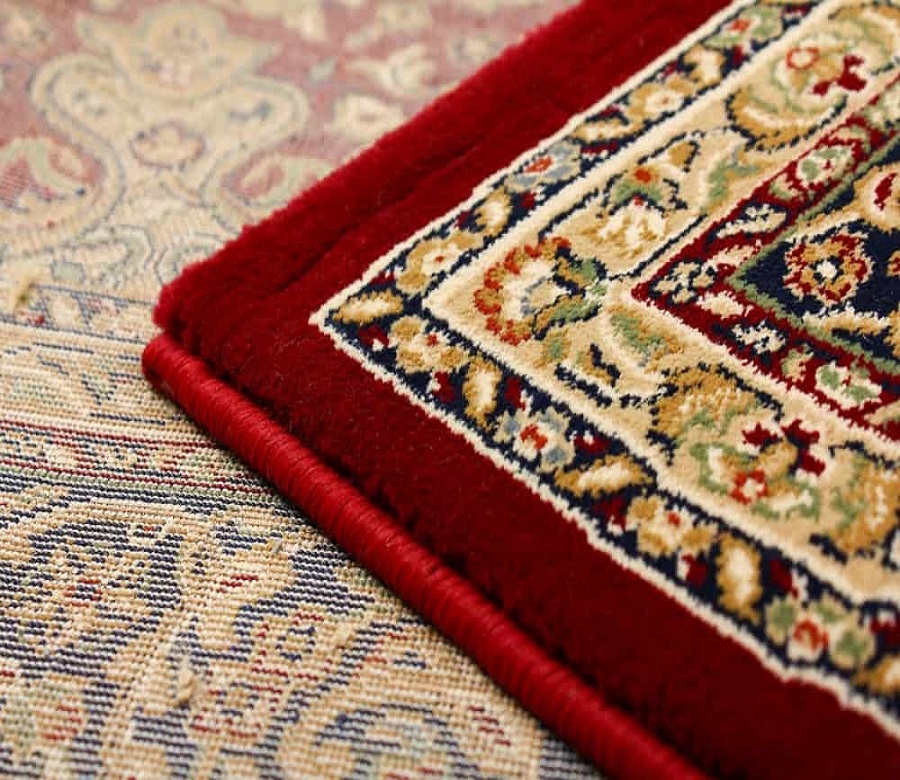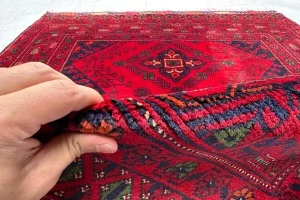Does the thickness of the carpet affect its quality?
The thickness of a carpet has an impact on its quality, but higher thickness does not always mean better quality. Sometimes thick carpets only look full and voluminous, but because the knots are woven with a small distance and density, they are less strong and wear out faster. In contrast, thinner carpets with a high density (such as 1500 comb with a density of 4500), due to the density of the threads and the fineness of the weave, have much higher durability and quality.
The thickness of the carpet is the height of its pile, or the height of the surface threads of the carpet. The longer the pile, the thicker the carpet seems. However, carpets that are finer and have a higher comb – such as 1200 or 1500 comb carpets – usually have shorter piles so that they can display detailed and delicate designs with greater clarity.
How does the thickness of a carpet affect its quality?
1. Softness and comfort underfoot:
Thick carpets have a warm and soft feel. When the pile is high, walking or sitting on them is more enjoyable, especially for spaces such as a child’s room or living room where there is more direct contact with the floor.
2. Sound absorption and heat retention:
A thicker carpet absorbs sounds better and prevents the transmission of ambient noise. It also helps to maintain the temperature of the space to some extent and is more suitable for cold homes.
3. Abrasion resistance:
If the thickness of the carpet is due to the use of high-quality yarn and a tight weave, its durability also increases. In this case, the carpet will wear out more slowly from wear and tear and continuous use. Of course, if the thickness is only due to bulky but poor-quality yarns, this advantage is lost.
But be careful;
Thicker is not always a sign of higher quality!
Some rugs have a full and voluminous appearance due to the use of thick yarns, but if they are woven with a low density, not only will they not be durable enough, but their beauty and elegance of design will also be reduced.
In contrast, rugs produced with a high density – such as 1200 or 1500 comb rugs – are usually thinner, but have a tighter, more delicate texture and much more detailed designs. This elegance, along with strength, indicates the true quality of the rug, even if they appear to be less thick.
Advantages and disadvantages of thick carpets;
Advantages:
Thick carpets feel warmer and more comfortable underfoot. Suitable for living rooms and children’s rooms.
In apartment buildings, greater thickness can help reduce sound transmission.
It wears out more slowly when exposed to impact or pressure from heavy objects.
Disadvantages:
Long piles cause design details to fade.
It is more difficult to move or wash.
Thick carpets attract more dust and are harder to clean.
Advantages and disadvantages of thinness
Advantages:
In carpets such as 1200 or 1500 combs, the design is very detailed and resembles a carpet panel.
It is easier to carry, wash and install.
Thin carpets are more popular in minimalist and luxury decoration today.
Disadvantages:
Due to their high density and short pile, they are not soft and voluminous.
They are less effective for cold or noisy homes unless with the right underlay.
 Thickness and density are two different concepts!
Thickness and density are two different concepts!
Thickness; refers to the length of the carpet pile
Density; refers to the number of knots woven in width and length
A carpet may be thick but have a low density (like some cheap carpets), which reduces durability.
A thinner but denser carpet, such as a 1500-thread count carpet with a 4500-thread count, has higher quality and longevity.
So how do we choose the right carpet?
- For the bedroom or child’s room
If softness and comfort are your priority, thick carpets with long pile are a good choice. Such as a 700-thread count carpet with a 2550-thread count or shaggy carpets that create a warm and soft feeling underfoot.
For the living room or formal spaces
If you are looking for a stylish look and designs with precise details, thinner but dense carpets, such as 1200 or 1500-thread count, are the best option. Despite their lower thickness, these carpets are very high quality and eye-catching.
For kitchens or high-traffic areas
In these spaces, a light, thin rug is a better choice, as it is easier to wash and move. Thin rugs with a durable texture also perform better against dirt and moisture.
Final Conclusion:
Thickness is only part of quality, not everything! True quality is determined when the carpet texture is compact, the yarn is first-class, and its design is appropriate for the space it is used in. Choosing smart means paying attention to every detail! By choosing carpet world, you can be sure that it will offer you a variety of carpets with the right density, fibers, and materials according to your needs.







 Thickness and density are two different concepts!
Thickness and density are two different concepts!